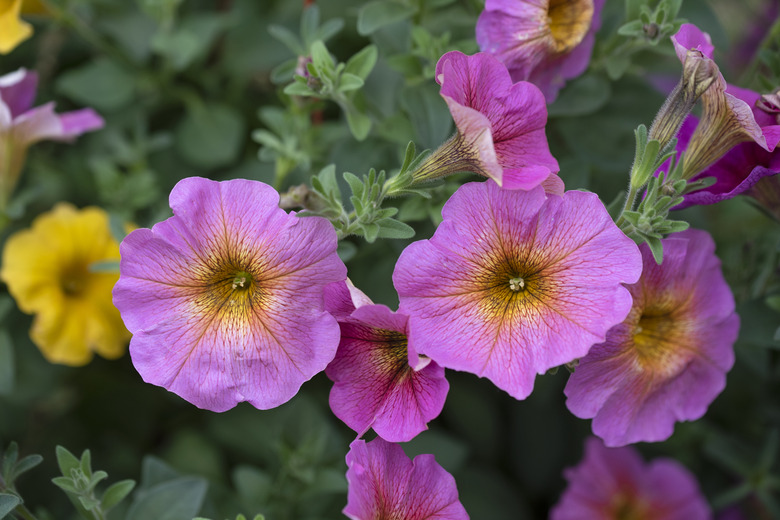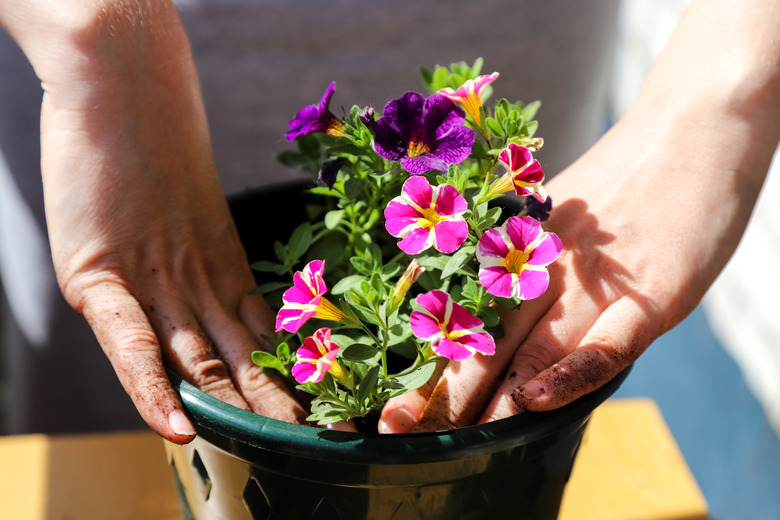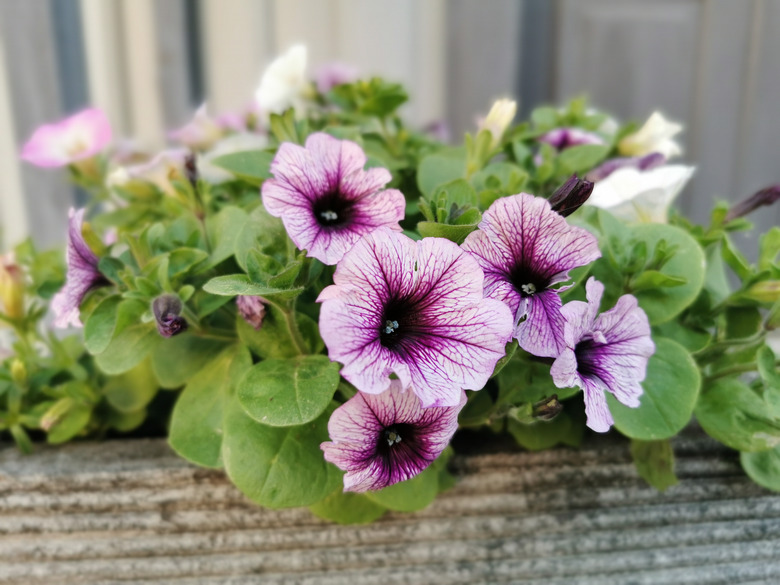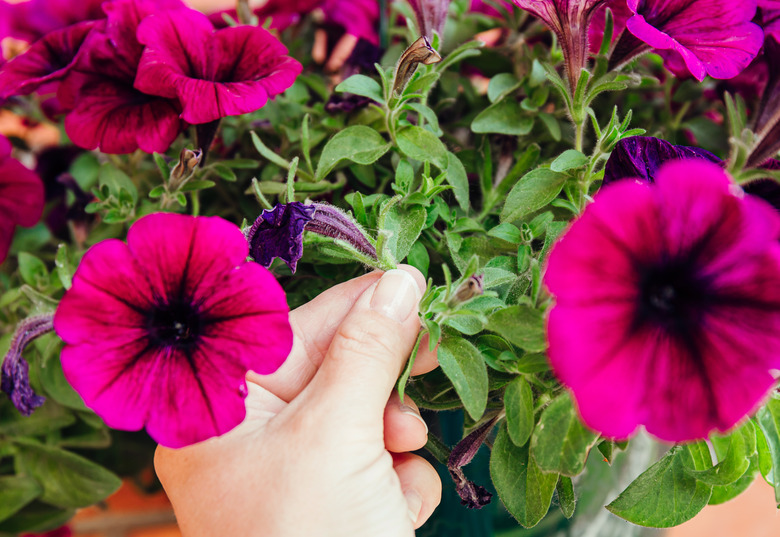How To Care For Petunias Indoors
Whether you are growing them as houseplants or simply overwintering them indoors until the following spring, caring for petunias (Petunia x hybrida) indoors is challenging.
Petunias are sun-loving plants that are typically grown outdoors as annual bedding plants, although they will grow as short-lived perennials within USDA plant hardiness zones 10 and 11.
The care that a petunia requires when growing indoors varies according to the season. Carefully observe the plant's blooming and overall health to provide it with what it needs to thrive indoors.
Caring for Petunias Indoors
Let's take a look at some of the basic needs of petunia plants.
Sunlight
**Petunias need full sun to bloom.** Position a potted petunia plant indoors near a window with southern, western or eastern exposure.
Too much heat can cause wilting and foliage discoloration, however. So do not place the petunia too near an unshaded south-facing window because it may get too hot.
Watering
Provide potted petunias with a deep drink of water whenever the soil feels dry just below the surface.
Reduce watering during the autumn and winter months when conditions are cooler and less bright. In winter, provide just enough water to keep the soil from pulling away from the sides of the pots and to prevent the plant from wilting.
Fertilizer
Potting soil enriched with fertilizer will provide enough nutrients for most petunia plants growing indoors, but those grown in unamended potting soil benefit from light feeding during the warmer months.
Feed with a low-nitrogen liquid fertilizer such as 7-9-5 or 10-20-10, which will help the plant bloom. Dilute the fertilizer to half its recommended strength and feed every two weeks from spring until midsummer.
Troubleshooting Indoor Petunias
Problems often arise when growing petunias indoors. These light-sensitive plants will drop their flowers when stressed from under and overwatering, so it is important to check soil moisture levels often and only water when the soil feels nearly dry below the surface.
Yellow foliage or leggy growth indicates that your petunia is receiving too much fertilizer. Stop feeding if the leaves turn yellow and repot the petunia into fresh soil.
Pest Problems
Sometimes petunias attract pests such as aphids. These tiny insects rarely cause serious damage, but they can be a nuisance.
A homemade solution made of 2 ounces of rubbing alcohol, 2 tablespoons of non-detergent liquid soap and 1 quart of water sprayed onto the leaves will help control an aphid outbreak.
Tip
Pay special attention to the undersides of the leaves when spraying the solution because that is where aphids like to hide.
Pruning and Deadheading Petunias
Petunias need to be regularly pruned and deadheaded to keep them looking tidy.
When grown indoors, petunias often produce leggy growth as they stretch toward the light. The long, weak stems should be pruned back to just above a set of leaves using sharp, clean pruning shears. Don't remove more than half of the stem when pruning.
Tip
Move the plant to a brighter location after pruning, which will help encourage bushier growth.
Petunia flowers take on a crumpled look as they fade, which gives the plant a ragged appearance. Removing the spent flowers will improve the plant's appearance and send its energy toward further flowering rather than making seeds.
Use your fingers to pinch off the flower at the base, or use narrow-tipped pruning shears to snip them off.
Warning
Wipe your pruning shears with household disinfectant before pruning to eliminate any pathogens.
Overwintering Petunias Indoors
Although it is possible to overwinter petunias indoors, most gardeners opt to simply replace the plants each spring because the plants rarely bloom well after overwintering.
However, if you do want to try to save your petunias for the next season, they are not demanding plants to care for during the winter months because they enter a dormant state until spring. Here's what to do to overwinter petunias:
- Position petunias in a cool, bright room during the winter months where they can go dormant.
- Prune back the entire plant to 4 inches using sharp, sanitized pruning shears.
- Provide just enough water to keep the soil from pulling away from the pot.
- Do not feed the petunia plant during the winter months so it can remain dormant.
Spring Repotting
In spring, repot the petunias into a pot that is 1 inch larger with fresh potting soil. Move the plant to a sheltered location outdoors a few weeks after the last frost.
Petunias are sensitive to sudden changes in temperature and humidity, so slowly acclimate the plant to outdoor conditions for a week or so before transplanting it into a permanent bed or outdoor container.
References
- North Carolina State Extension: Petunia x Hybrida
- Missouri Botanical Garden: Petunia
- Iowa State University Extension: Starting Petunias Indoors
- University of Minnesota Extension: Growing Petunias
- White Flower Farms: How to Grow Houseplants
- University of Illinois Urbana-Champaign Extension: Overwintering Annuals is Possible With These Tips



